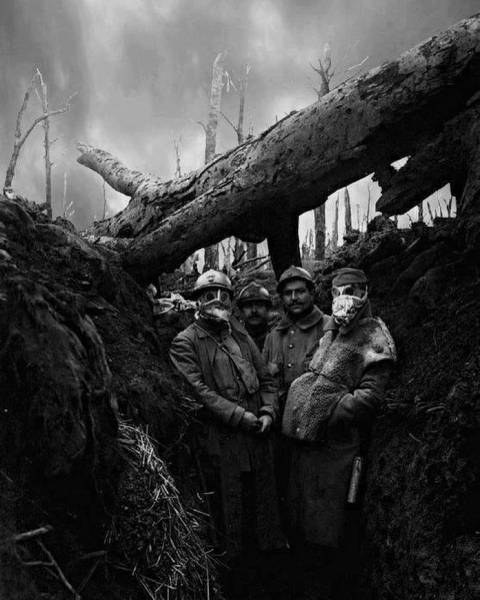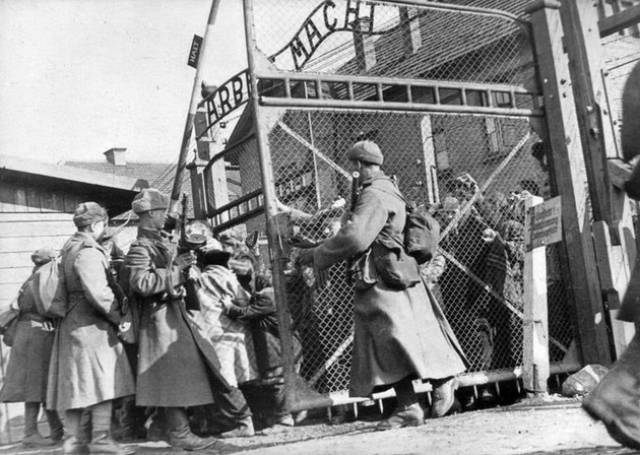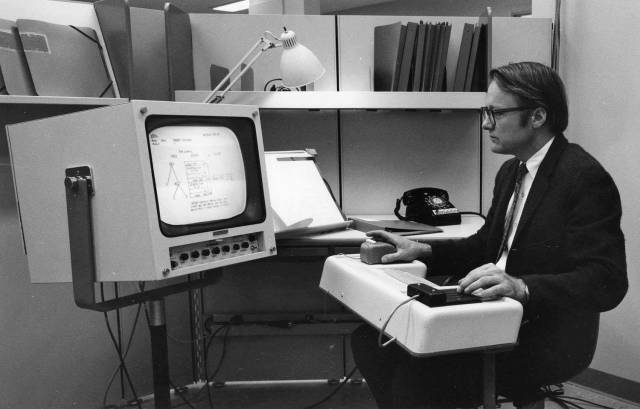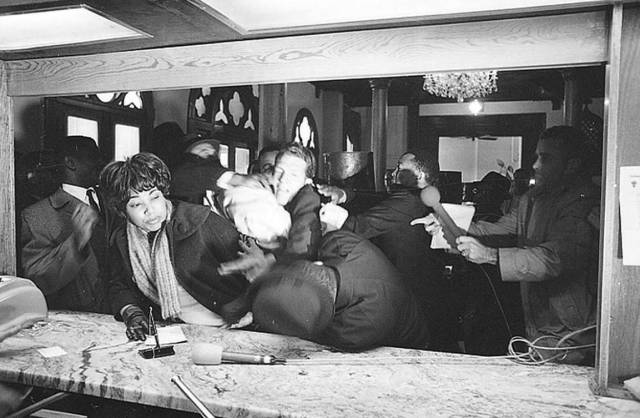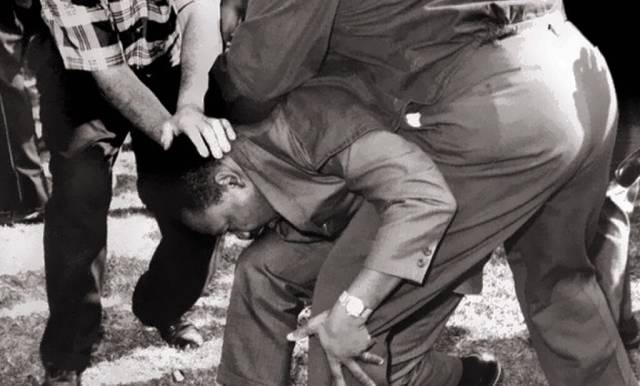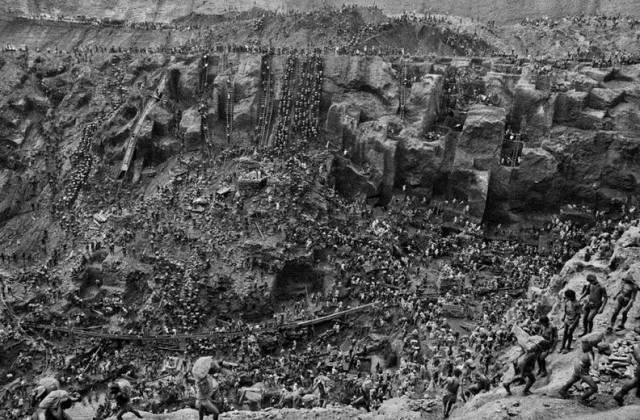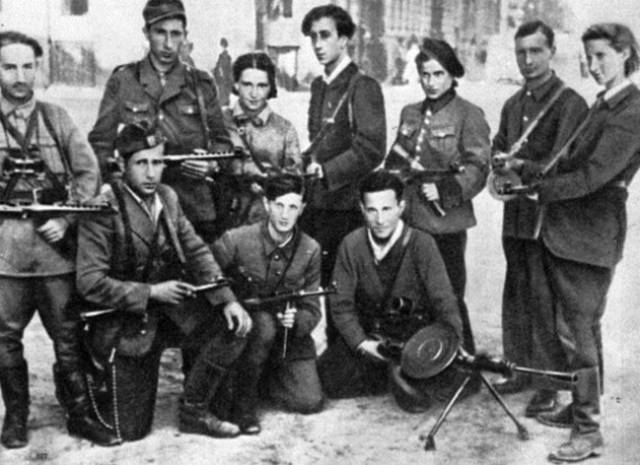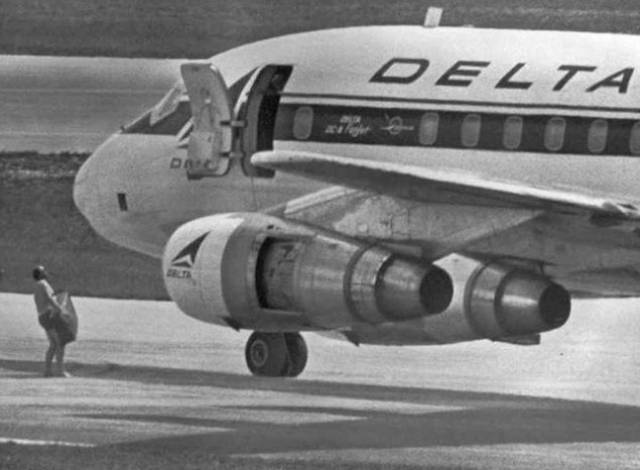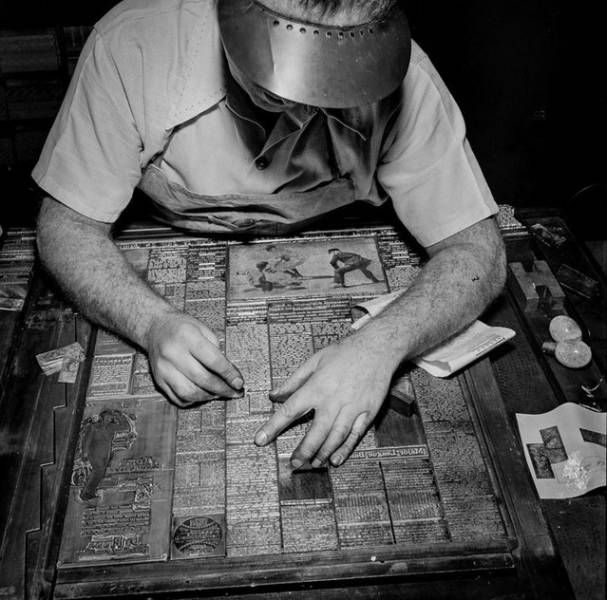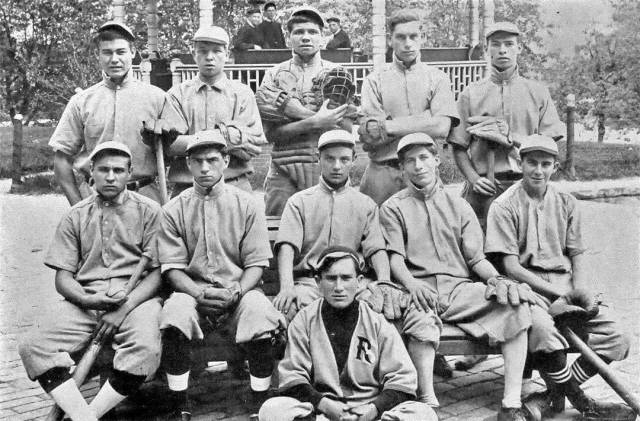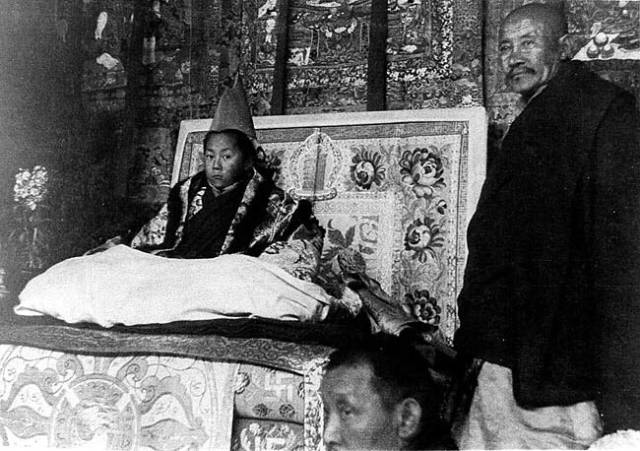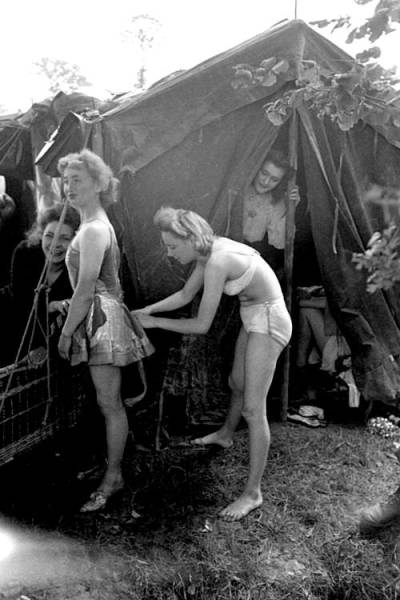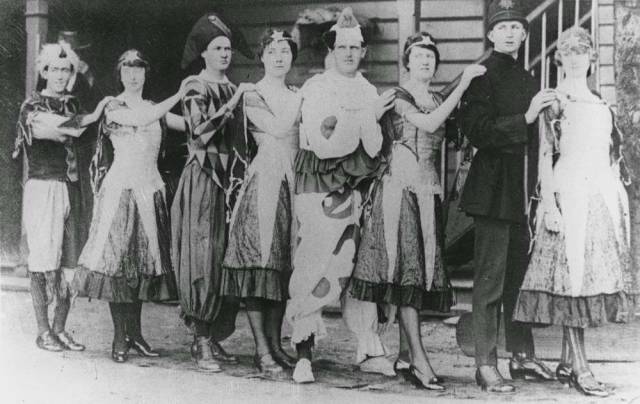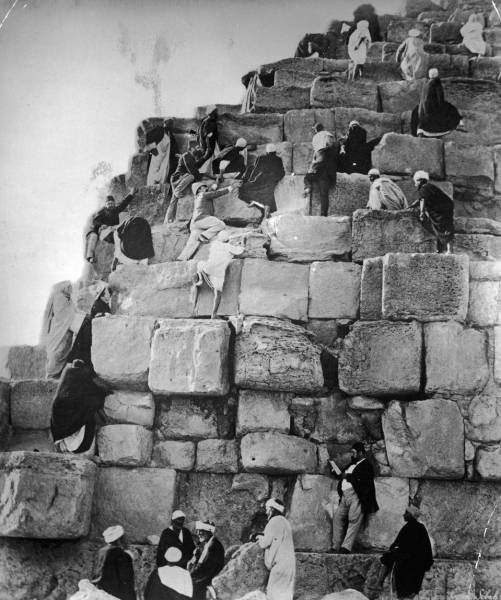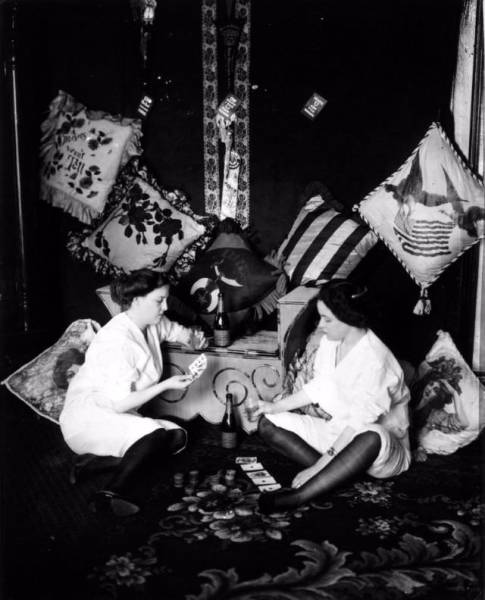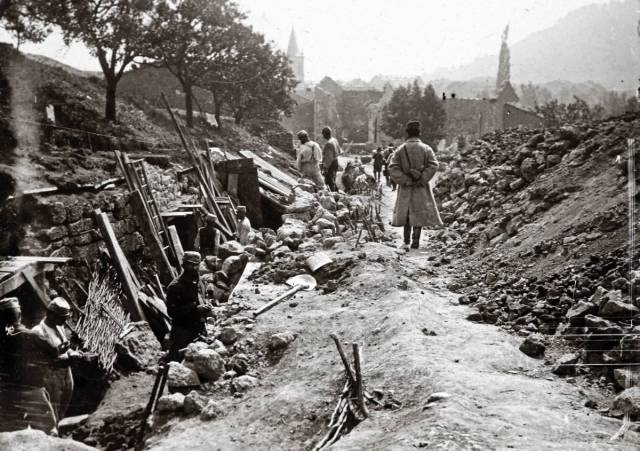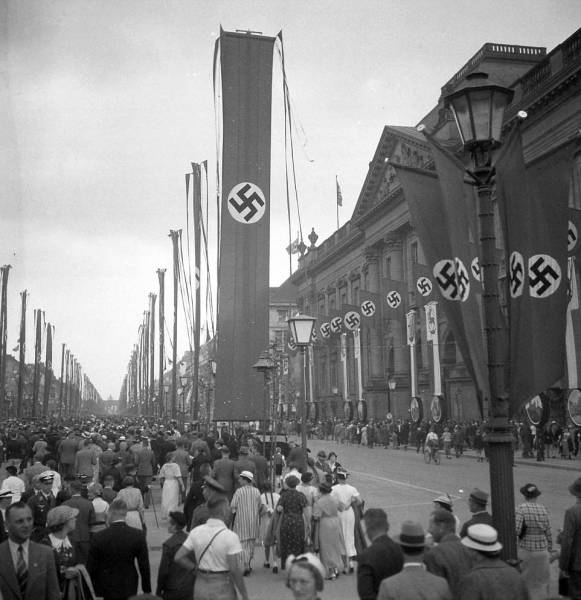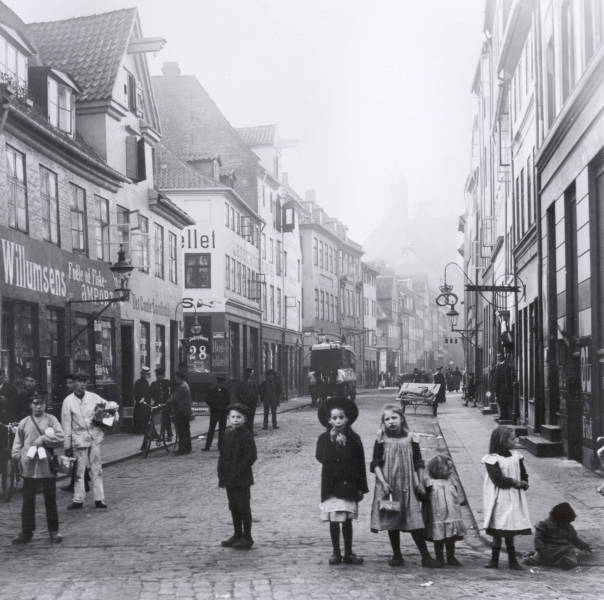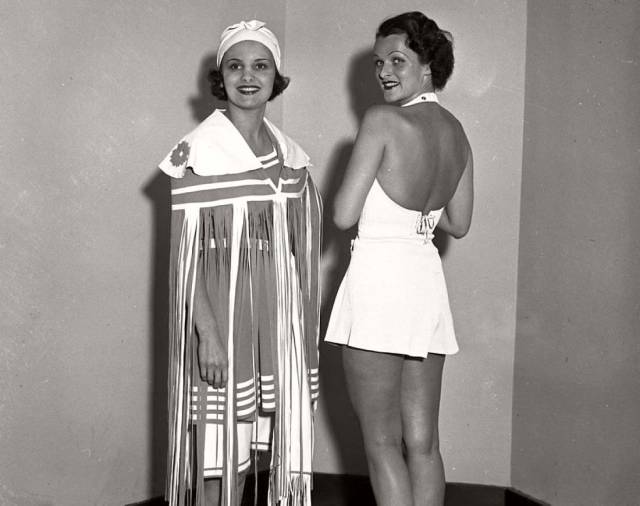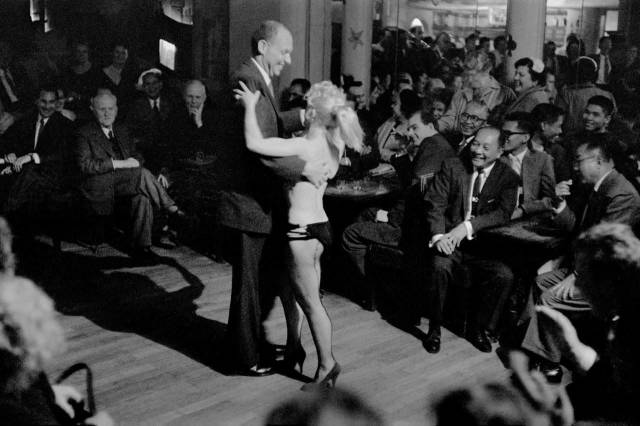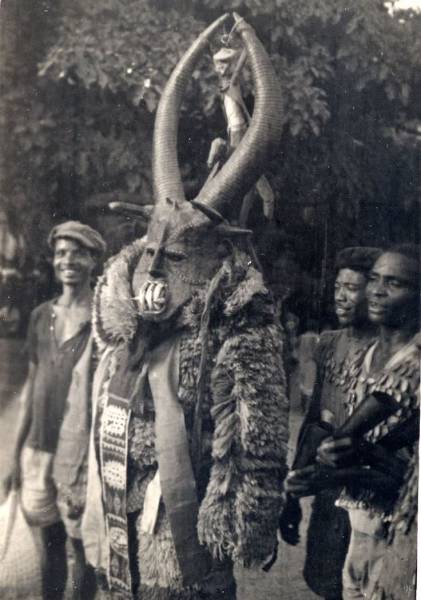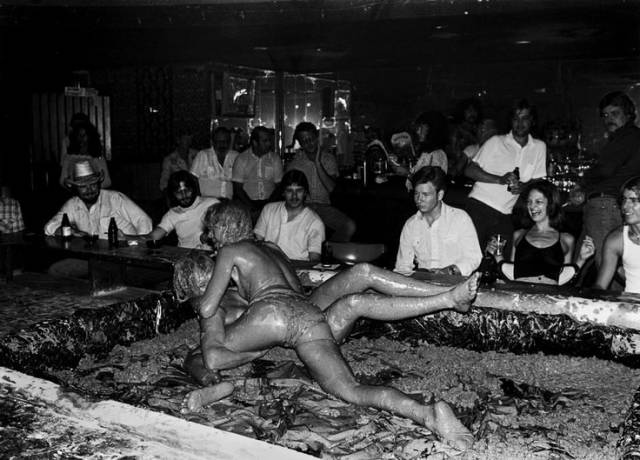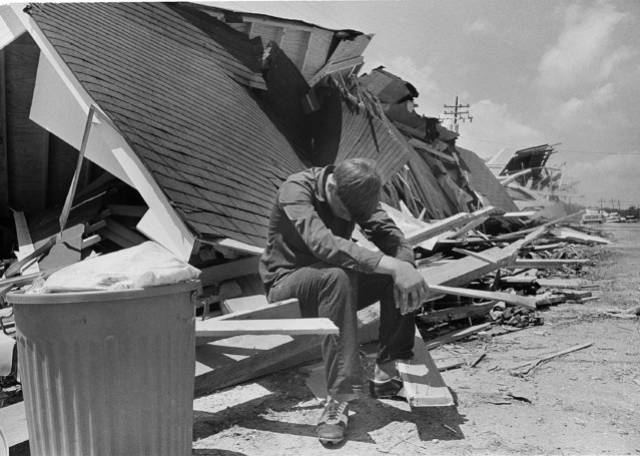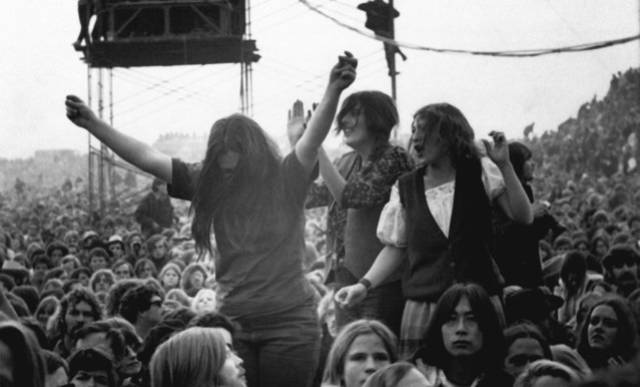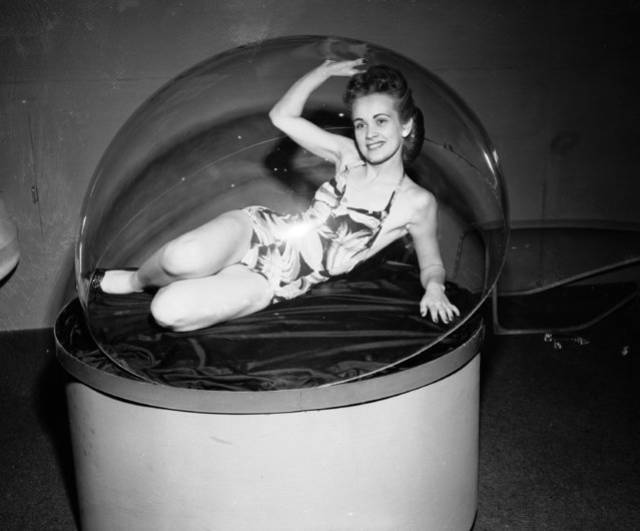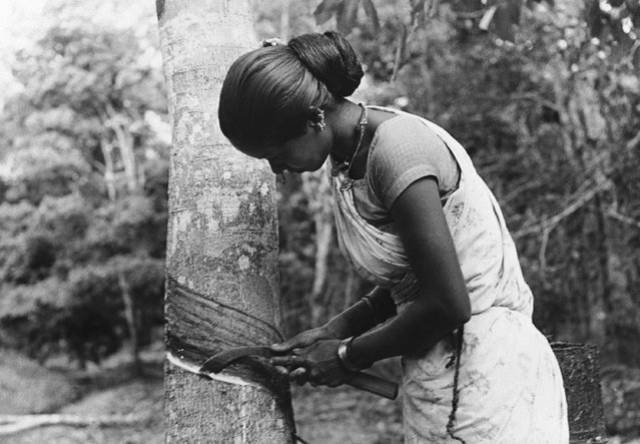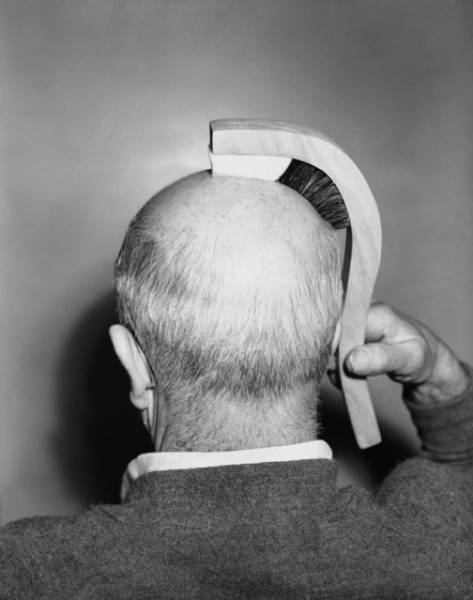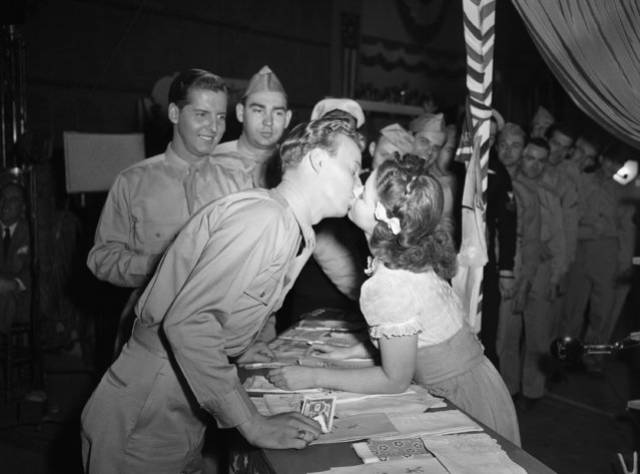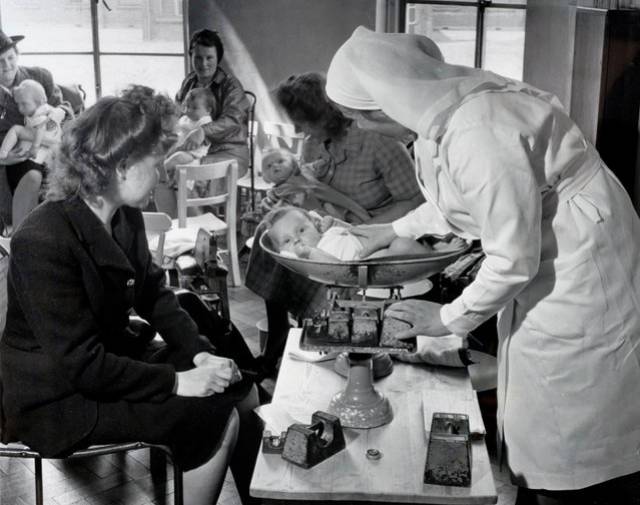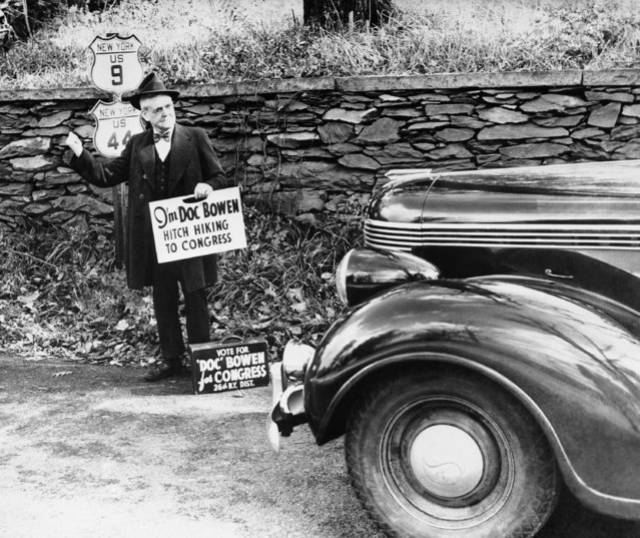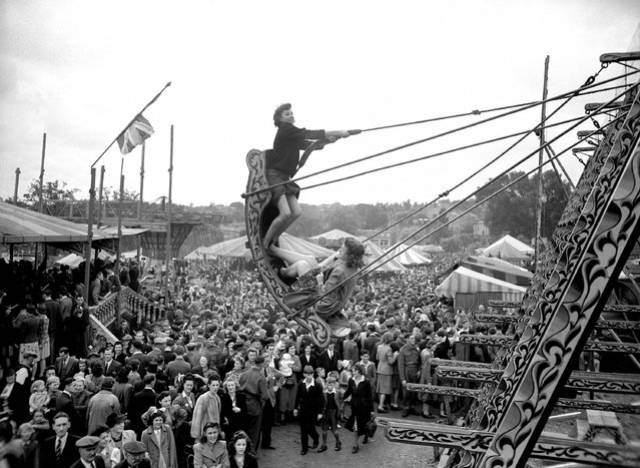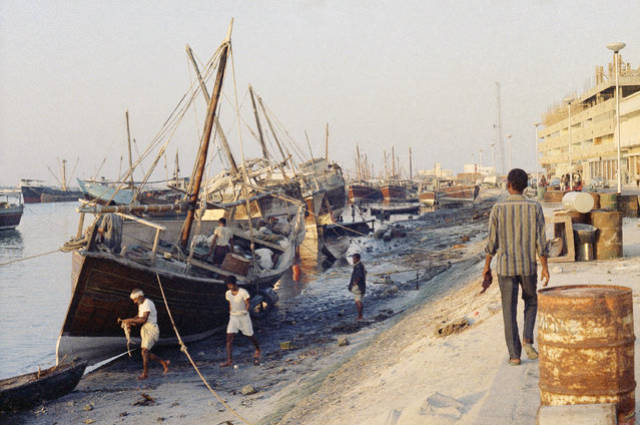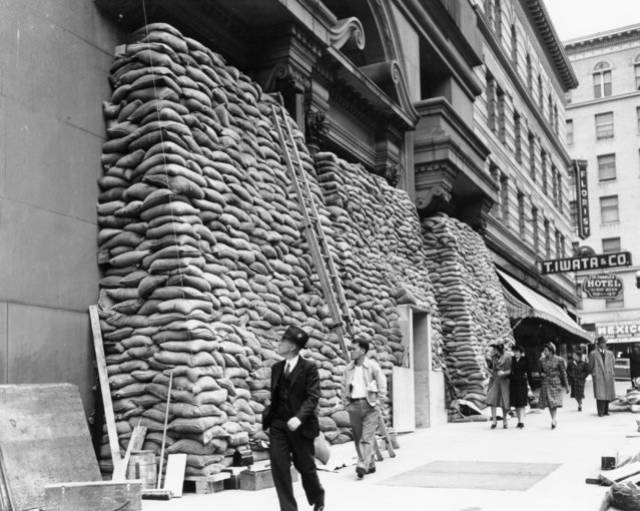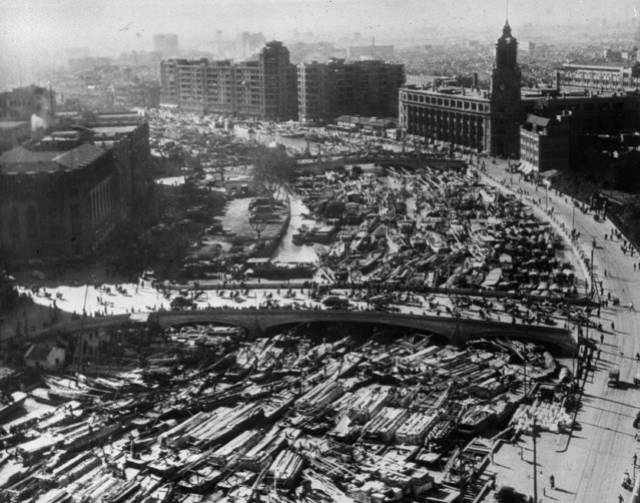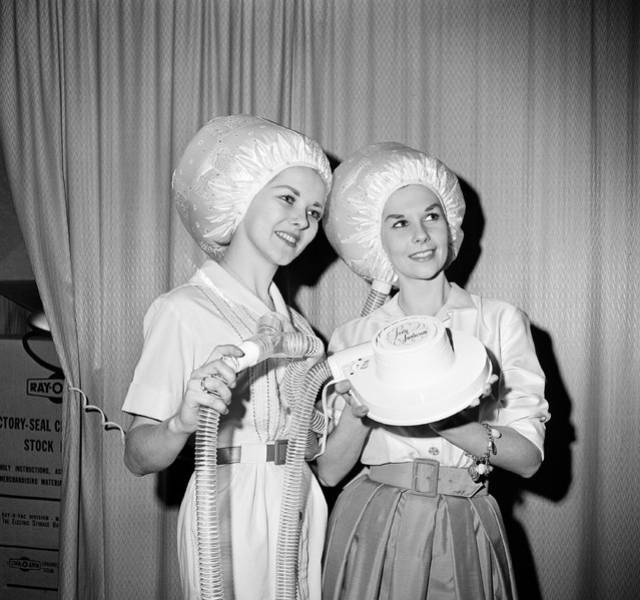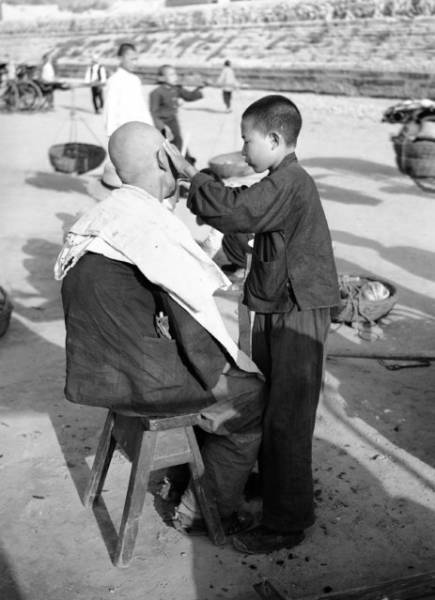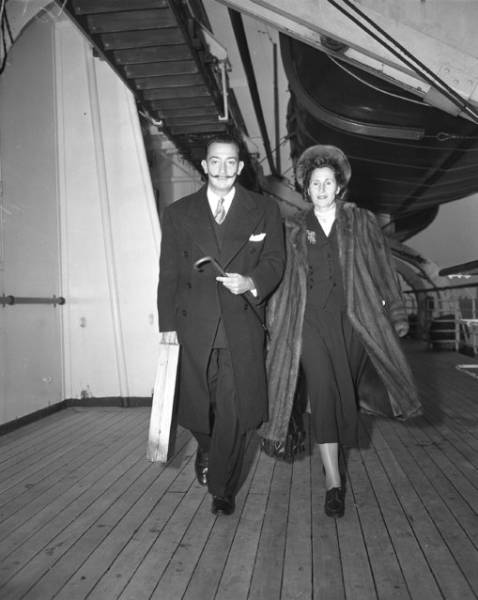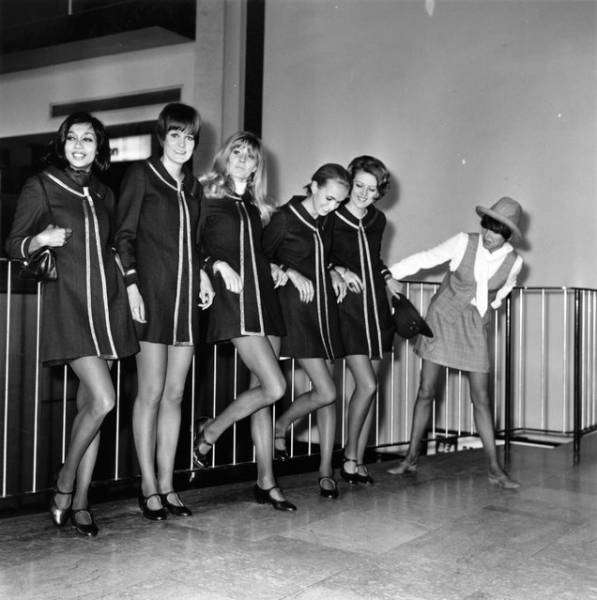French WW1 Trench, 1915
The Soviets opening the gates of the Auschwitz concentration camp after liberating it exactly 73 years ago. January 27, 1945
The first public demonstration of a computer mouse, graphical user interface, windowed computing, hypertext and word processing, 1968
Dr. Martin Luther King Jr. is attacked by States Rights Party member Jimmy Robinson as King tries to register at the Hotel Albert in Selma, Alabama, on January 18, 1965.
Martin Luther King Jr. being welcomed to Chicago’s Marquette Park, 1966
Using a two-horn listening device at Bolling Field in Washington, D.C., in 1921 before the invention of radar, to listen for distant aircraft.
The Beginning Of The Eiffel Tower
The hellish mines of the 1980s Brazillian gold rush
The Avengers, The Jews who planned to kill German SS after the War. 1946
An FBI agent, wearing only a pair of swim trunks, per the hijackers’ instructions, carries a case containing a $1 million ransom to the opened door of a hijacked Delta DC8 jet in Miami. The jet later took off for Algeria
Assembling the sports section of the New York Times, 1942
George Herman “Babe” Ruth (Top row, center) at St. Mary’s Industrial School for Boys, Baltimore, Maryland, 1912.
The Dalai Lama (age 4) being enthroned as the spiritual leader of the Tibetan people, February 22, 1940
Two ladies get ready to entertain US troops in France a few weeks after D-Day in 1944. Almost immediately after getting a foothold in France, the US had showgirls entertain troops with songs and dancing. After the liberation of major cities, especially Paris, big name movie stars, comedians, and music acts came to entertain troops during USO shows. The Soviets also entertained their troops, normally with acrobatic routines or bands. The Germans also entertained their troops as well, but usually with organized events in occupied cities. Troop moral was vital by all parties in WWII, and keeping them entertained and knowing what the common soldier was fighting for was paramount. Each side did it in different ways, but it was done. The US just documented it much more during WWII due to the huge names involved.
Costume parade in Charleville, Queensland, Australia in 1920.
Tourists being assisted by their guides as they climb one of the Pyramids at Giza in the 1890s. Tourism at the Pyramids is thousands of years old, with people from the empires of Macedon, Rome, French, British and many more coming to Egypt to see them. They climbed them, took pieces, and this was before the sites were even excavated. Eventually, in the 1980s Egypt stopped people from climbing them, as such wear and tear was causing significant damage to the outsides of the Pyramids. It can be possible to still do so, perhaps with a pass for a fee, but not freely and easily as it was before the restrictions.
Prostitutes play cards and drink between clients in a brothel in New Orleans, US in 1912. Prostitution was fairly common across the US up until the women's movement in the US in the early 1900s. Eventually, every state outlawed it. Once they became a state, only Nevada would eventually allow it. As with any service job, much of an average day can consist of no activity. Alcohol and gambling, also legal at the time, could take up much of a prostitutes free time. Whats also interesting is it was not uncommon for a frequent customer to marry a prostitute, and possibly the prostitute would still work despite being married. One of the most famous example of this situation is Wyatt Earp and 2 of his brothers who all either married or had extended relationships with prostitutes.
French soldiers build shelters at Saint-Agnant-sous-les-Cotes in eastern France in 1915. Shelling locations during sieges in WWI was a major strategy. Soldiers often built complex trenches, with many underground areas for shelter during times of being shelled. These shelters also led to the forward trenches, allowing troops under cover to move to and from key areas near the front. This was not uncommon in many areas during much of the stalemate of the battles at the Western front in WWI.
People head to see the Olympics in Berlin, Germany in 1936. Germany won the rights to host the games in 1931 and The Third Reich planned it to be the greatest public event in history at that time. Other countries even considered boycotted the games fearful of what Germany would do with their propaganda if they did well at the games. Hitler even had the event broadcasted for the first time, with the most powerful signal ever sent into space at that time. It was a display of power and wealth from the rebuilt German economy.
A street in Copenhagen, Denmark in 1900. It's interesting that the entire street posed for the picture, even from considerable distance in the background.
Models pose before a fashion show in New York City, US in 1932. As with any decade, some fashion took off, and others would flop. The outfit on the right became quite common around the US, but the outfit on the left not so.
The University of Michigan playing Michigan State University in American Football in Michigan, US in 1913. In the late 1800s and early 1900s, clubs and colleges started changing the rules of American Rugby which developed into American Football. The biggest change that made the game something completely different was the addition of the forward pass, which was added in 1906. As you can see, the goal post is at the touchdown line, some of the players are not wearing helmets, but the referee does still have a whistle. Football evolved drastically and is the most popular sport in the US. The rest of the world still does not really care for this sport, and with the deadly consequences of all the hits and concussions, the sport may have reached its peak.
An American soldier shares cigarettes and chocolate with his Japanese girlfriend outside of Tokyo, Japan in 1946. The soldier is in fact violating restrictions on giving Japanese civilians such rations. Many Americans stationed in Japan for the 10 years of the US occupation after WWII integrated with the locals. Around 2.3 Million Japanese soldiers died in the war, with another 326,000 wounded. Not only that, all surrendering soldiers were not allowed to return to a daily life so quickly. Over 4.4 percent of the Japanese population died, with their entire government, economy, and infrastructure broken down. This left many families, especially young women, no way to support themselves. But the hundred of thousands of American men stationed in the country had access to necessities which made such relationships commonplace and totally acceptable across the country.
Businessmen from around the world are entertained by a dancer in Paris, France in 1958. Paris has been a key city for entertainment not seen around the world for hundreds of years, and the 1950s was no different. Many major European businesses would hire clubs in Paris to entertain investors or key executives. It was easier to do it in Paris where it was completely acceptable than try it in other countries which hadn't caught up sexually to the French. By the 1970s, that would all change as pornography, stripping and of course risque but acceptable images and films depicting adult material became available worldwide.
A man wearing an Agaba mask in Achalla, Nigeria in 1946. This was part of a traditional dance from the local tribe in the area that had been around for thousands of years. The mask itself could be hundreds of years old, as many African tribes had masks, often reusing them for ceremonies. They have become collectible antiques from westerners. This one is one of the more detailed and scarier ones.
Mannequins in a home near the Trinity Nuclear Test site in New Mexico, US in 1945. Most initial atomic bomb testing was done inside the continental US in the desert, usually in New Mexico, Arizona or Nevada. The US military built towns, adding all normal amenities of the time to each home, and then put mannequins in to try and determine the damage such an atomic bomb would cause if ever detonated on civilian population. As the weapons became more powerful and the radiation and dangers became better understood, testing was stopped inside the continental US and moved to islands by the 1950s. All the test sites still have significant radiation and cannot be visited for extended hours without suffering from exposure.
Women mud wrestle at the Sand Box Lounge in Phoenix, Arizona in 1980. During the late 1970s and 1980s, many clubs came up with weird ways to entertain clients besides just attractive women stripping. A major reason for this was the mass production of nude magazines and the expansion of pornography. Strip clubs struggled to make money and as with any business, owners tried wild new ways to keep customers and to entertain. These gimmicks were entertaining and fun at first, but most patrons didn't care for them after a while, and they mostly died out by the early 1990s. Some places still do such things, but they are few and far between.
The streets of Moscow, Russia during The Great Moscow Flood in 1908. Much of the city flooded, but it wasn't that deadly, mostly affecting the poor when it comes to deaths. It heavily impacted basic movement however and caused the Russian empire to make additions to the drainage of the Moskva River to prevent it from flooding again. It was a large project that was very successful. An unknown number died but it is believed to be less than 100.
In this November 8, 1961 file photo, Zsa Zsa Gabor, aided by a friend, Robert Straile, digs through the ashes of her $275,000 Bel-Air home in Los Angeles. Nearly 500 homes burned in the area during the infamous Bel Air Fire of 1961. Celebrities, including Burt Lancaster and Zsa Zsa Gabor, lost homes in the fire.
Sixteen-year-old Glenn Lacombe sits with his head bowed after returning to the remains of his home in Buras, La., August 22, 1969, four days after Hurricane Camille hit the Gulf Coast. Authorities prevented residents from returning to their homes for several days after the storm.
This windmill, said to be one of world's largest, is seen just after the second of two 32-ton, 80-foot stainless steel blades was set in place at Grandpa's Knob Castleton, Vermont August 25, 1941. The knob is a 2000-foot mountain at Castleton. Palmer Cosslett Putnam, Boston engineer and inventor of the gigantic machine, which is designed to generate 1000 kilowatts of electricity from the mountain winds, stands at the right regarding his creation.
Music fans dance and sing to the Rolling Stones at a free concert at the Altamont Speedway near Livermore, Ca. on December 6, 1969. The concert was dubbed “Woodstock West”.
No, actress Lois Collier is not being measured for a new pair of shoes. She's demonstrating a movie studio replica of the “Spanish Boot”, in Hollywood, Los Angeles, Calif., December 30, 1946, used during the middle ages to break feet. Block attached to a crank, which when turned, compresses the shackled foot.
Model Gladys McDaniel adds a bit of glamour to this exhibit of molded transparent plexiglas as she poses under a dome of the material at the third annual meeting of the Society of Plastics Engineers, in Chicago, Ill., February 2, 1947. The plexiglas, which is used in the manufacturing of airplanes, is made by the Fabri-Form Company of Byesville, Ohio.
A native Malaysian girl tree tapper at work, on February 3, 1943. Considerable skill is required for the tapping of a rubber tree, as the latex lodges against thin layers of cells that separate bark from wood. As these cells always run in a downward direction, from right to left, the cut usually is at a 30 degree angle in the opposite direction, from left to right, if too deep the bark will not reproduce; if not deep enough the yield is diminished.
Mr. Ted Spence, engineer of the Los Angeles Brush Manufacturing Corp., demonstrates the new “Hairline Brush” in Los Angeles, January 12, 1950. The brush is constructed to fit a bald head's contour, with bristles for brushing hair and a felt pad to gently massage the scalp.
For the first time in her long movie career, Shirley Temple gets kissed in grown-up fashion by Jerry Shane, an ex-Marine from Grand Rapids, Mich., who plays a bit part in the movie called “Kiss and Tell”, January 19, 1945. Some observers at the historical occasion suspected that Shirley's performance was backed by a little previous necking experience, but Shirley wouldn't admit it.
This array of keyboards, patch cords, knobs, dials, flashing lights and tape recorders is called a Moog synthesizer, a device which Mort Garson, rear, says an simulate any sound, musical or nonmusical. Operating the equipment is Gene Hamblin, January 27, 1971. There are several hundred similar devices, made by Robert Moog of Trumansburg, N.Y., around the country, mostly in colleges teaching electronic music.
A newborn baby is weighed at a Bristol clinic, Great Britain on July 1948. This service was provided free on the National Health Service.
Edward J. “Doc” Bowen, Independent candidate for Congress, is seen as he started a hitchhiking campaign from Poughkeepsie, N.Y., on October 21, 1938, which he hopes will carry him to a seat in the national legislature. He is running from the 26th, New York State, district.
A view of the holiday crowd on Hampstead Heath, London, on August 2, 1943, with the chair-o-planes swinging high.
Dubai Creek, The Smugglers Cove through which 170 million dollars worth of gold bullion flows every year on December 12, 1969.
As protection against possible Japanese air raids, sandbags are piled as high as the second story against the telephone company building in San Francisco, on December 13, 1941.
Sampans are squeezed nearer and nearer to the mouth of Yangtze river, Shanghai, China, December 21, 1948, as more refugees flee from the advancing Communist troops arrive in the city. Bridge in the foreground is Chapoo Road Bridge.
Tandem hair drying is possible with a new two-hood attachment for any electric hair dryer manufactured by Postcraft Co of Tucson, Ariz., shown in Chicago, January 27, 1965. A Y adapter permits two hoses to be attached to the dryer.
In China boys from 10 to 16 serve as barbers. Their shop is the open street, and anything serves as a chair, a haircut costs a penny, and a shave a half penny. The typical hairdresser's scene, in Peking, on October 23, 1936.
Member of The Beatles Ringo Starr and his wife, Maureen, 21, pose with their son, Jason Starkey, in London's Queen Charlotte's Hospital, England, on August 23, 1967. The couple's first son, Zak, was born Sept. 1965.
Salvador Dali is shown with his wife, Mrs. Gala Dali, as they arrive in New York on the S.S. America, December 21, 1949.
English fashion designer Mary Quant (R) with a group of models at Heathrow Airport, before leaving for a continental fashion tour, 18th March 1968.

